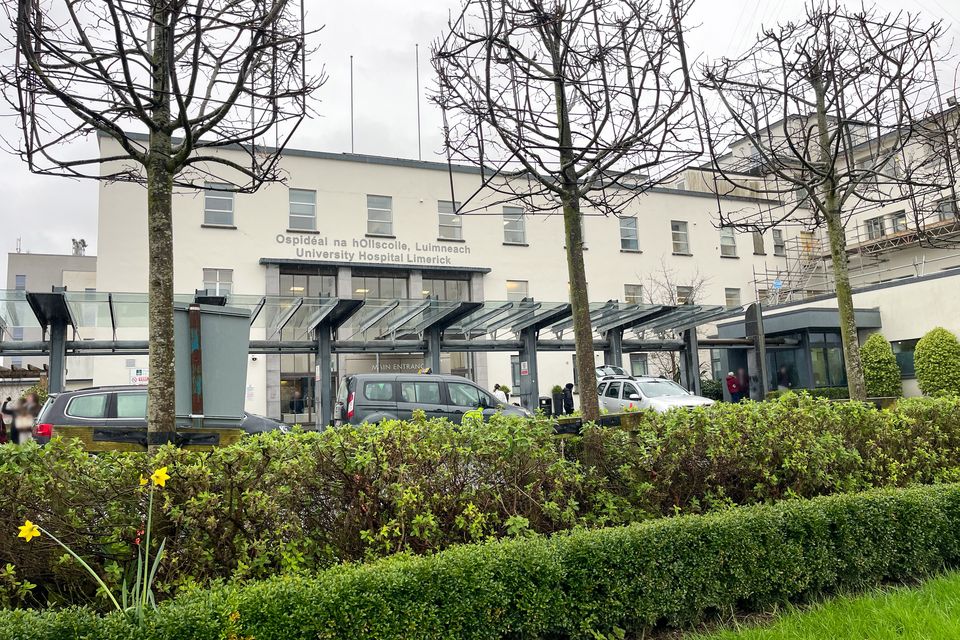Sudden death of mother-to-be at University Hospital Limerick triggers fresh inquiry
Woman (33) who was told she had lost baby suffered cardiac arrest
Recent reports surrounding University Hospital Limerick have led some Limerick residents to seek medical help in other counties
The sudden death of a young woman at University Hospital Limerick (UHL) last weekend has sparked another inquiry.
Concerns about patient safety at the hospital have heightened following the sudden of a female patient last Sunday.
The latest tragedy relates to a 33-year-old woman pregnant with her first child. Her death has left her husband, family and friends devastated.
It has also caused further alarm and shock among medical staff and management at UHL.
It is understood the woman was admitted to University Maternity Hospital Limerick on Thursday, February 15, complaining of feeling unwell.
Last Saturday, she was transferred to University Hospital Limerick and underwent an angiogram and several other tests, including blood tests, to check for infection or possible sepsis. It is understood the angiogram did not show anything of concern.
Read more
Later on Saturday, the woman and her husband were informed they had lost their baby.
The next day, the woman’s condition deteriorated rapidly and she suffered a cardiac arrest.
A spokesperson for University Limerick Hospital Group extended condolences to the woman’s grief stricken family, saying: “We would like to extend our deepest sympathies to the family and loved ones of the patient concerned.
“We are currently reviewing the circumstances surrounding the death of the patient in line with the HSE Incident Management Framework.
“This is normal HSE practice where a sudden death occurs in our care. This review will inform any future actions.
“Our staff continue to be available to support the family through this difficult process.”
It is understood the review of the woman’s death will look at all the circumstances of her treatment in both the maternity hospital and UHL.
All test results and vital sign monitoring scores will be reviewed again and a report, including her post-mortem examination result, will be completed.
In April 2013 following the death of Savita Halappanavar, all maternity services nationally introduced a system known as the Irish Maternity Early Warning System (IMEWS).
Brought in to assist in the early identification of critical illness in women, it consolidates the recording of a patient’s vital signs on a dedicated chart in her obstetric records.
The chart ensures omissions are more obvious and trends showing clinical deterioration can be identified sooner rather than later.
University Hospital Limerick has suffered endemic overcrowding for many years.
The latest tragedy is among a number of deaths that have led to reviews there.
Recently, concerns among the public over patient safety due to overcrowding have resulted in people avoiding the emergency department in UHL and attending in Cork, Galway or Dublin instead.
As part of the HSE Incident Management Framework, all major incidents are initially put through a preliminary assessment that will then help in classifying their seriousness.
When a patient suffers harm it is regarded as a Category 1 incident and will be subject to a review.
In the case of Aoife Johnston, a 16-year-old from Shannon, Co Clare, a review into her death at UHL has led to an independent investigation led by former Chief Justice Frank Clarke.
Aoife died from sepsis complications following bacterial meningitis after waiting 12 hours in a severely overcrowded emergency department on December 19, 2022.
A HSE internal review found overcrowding in UHL was “endemic”.
On February 7, a record 150 patients who were deemed ill enough to be admitted were left on trolleys or chairs without a hospital bed at UHL.
Health Minister Stephen Donnelly has repeatedly defended the Government’s handling of the overcrowding crisis there.
On January 31, he told the Select Health Committee: “It is worth saying the hospital is making very considerable progress on its waiting lists and has been for some time.
“In the lifetime of this Government, there has been an increase in the hospital’s workforce, believe it or not, of more than 1,100 staff, which is very substantial.
“It has gone from approximately 2,800 staff to 3,900 staff. That is a 40pc increase in the hospital’s workforce in the lifetime of this Government. That gives a sense of how much we have invested in that hospital.”
Last summer, following the publication of a Health Information and Quality Authority (Hiqa) inspector’s report, a HSE Expert Team were deployed in the hospital in a bid to tackle overcrowding.
On the day of the unannounced inspection, Hiqa found 60 patients had been waiting “an especially long time”, including one patient who had waited 116 hours, a second more than 85 hours and a third 71 hours.
Hiqa also found that one patient had waited 45 hours for an angiogram.
Join the Irish Independent WhatsApp channel
Stay up to date with all the latest news










